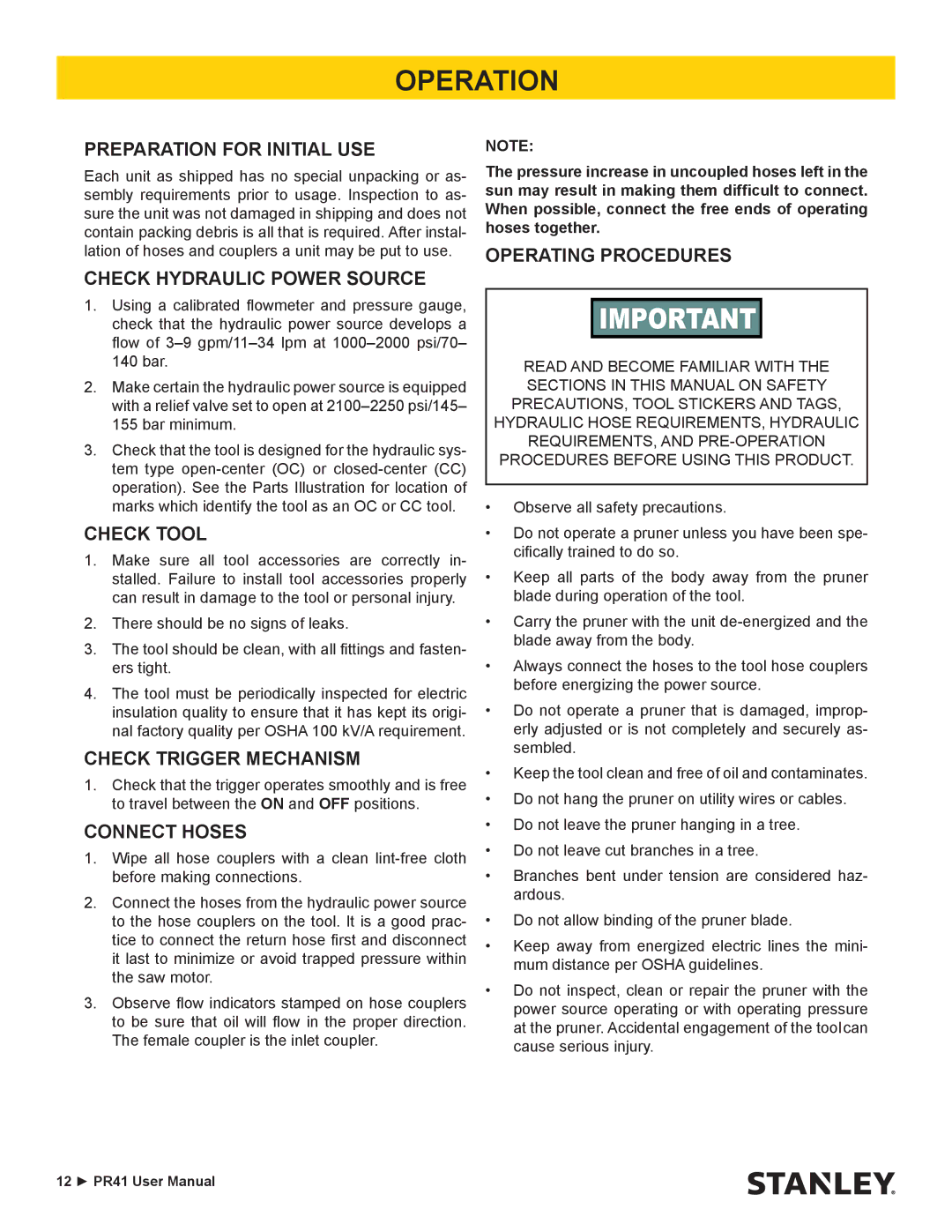
OPERATION
PREPARATION FOR INITIAL USE
Each unit as shipped has no special unpacking or as- sembly requirements prior to usage. Inspection to as- sure the unit was not damaged in shipping and does not contain packing debris is all that is required. After instal- lation of hoses and couplers a unit may be put to use.
CHECK HYDRAULIC POWER SOURCE
1.Using a calibrated flowmeter and pressure gauge, check that the hydraulic power source develops a flow of
140 bar.
2.Make certain the hydraulic power source is equipped with a relief valve set to open at
3.Check that the tool is designed for the hydraulic sys- tem type
CHECK TOOL
1.Make sure all tool accessories are correctly in- stalled. Failure to install tool accessories properly can result in damage to the tool or personal injury.
2.There should be no signs of leaks.
3.The tool should be clean, with all fittings and fasten- ers tight.
4.The tool must be periodically inspected for electric insulation quality to ensure that it has kept its origi- nal factory quality per OSHA 100 kV/A requirement.
CHECK TRIGGER MECHANISM
1.Check that the trigger operates smoothly and is free to travel between the ON and OFF positions.
CONNECT HOSES
1.Wipe all hose couplers with a clean
2.Connect the hoses from the hydraulic power source to the hose couplers on the tool. It is a good prac- tice to connect the return hose first and disconnect it last to minimize or avoid trapped pressure within the saw motor.
3.Observe flow indicators stamped on hose couplers to be sure that oil will flow in the proper direction.
The female coupler is the inlet coupler.
NOTE:
The pressure increase in uncoupled hoses left in the sun may result in making them difficult to connect. When possible, connect the free ends of operating hoses together.
OPERATING PROCEDURES
IMPORTANT
READ AND BECOME FAMILIAR WITH THE SECTIONS IN THIS MANUAL ON SAFETY PRECAUTIONS, TOOL STICKERS AND TAGS, HYDRAULIC HOSE REQUIREMENTS, HYDRAULIC REQUIREMENTS, AND
•Observe all safety precautions.
•Do not operate a pruner unless you have been spe- cifically trained to do so.
•Keep all parts of the body away from the pruner blade during operation of the tool.
•Carry the pruner with the unit
•Always connect the hoses to the tool hose couplers before energizing the power source.
•Do not operate a pruner that is damaged, improp- erly adjusted or is not completely and securely as- sembled.
•Keep the tool clean and free of oil and contaminates.
•Do not hang the pruner on utility wires or cables.
•Do not leave the pruner hanging in a tree.
•Do not leave cut branches in a tree.
•Branches bent under tension are considered haz- ardous.
•Do not allow binding of the pruner blade.
•Keep away from energized electric lines the mini- mum distance per OSHA guidelines.
•Do not inspect, clean or repair the pruner with the power source operating or with operating pressure at the pruner. Accidental engagement of the toolcan cause serious injury.
12 ► PR41 User Manual
